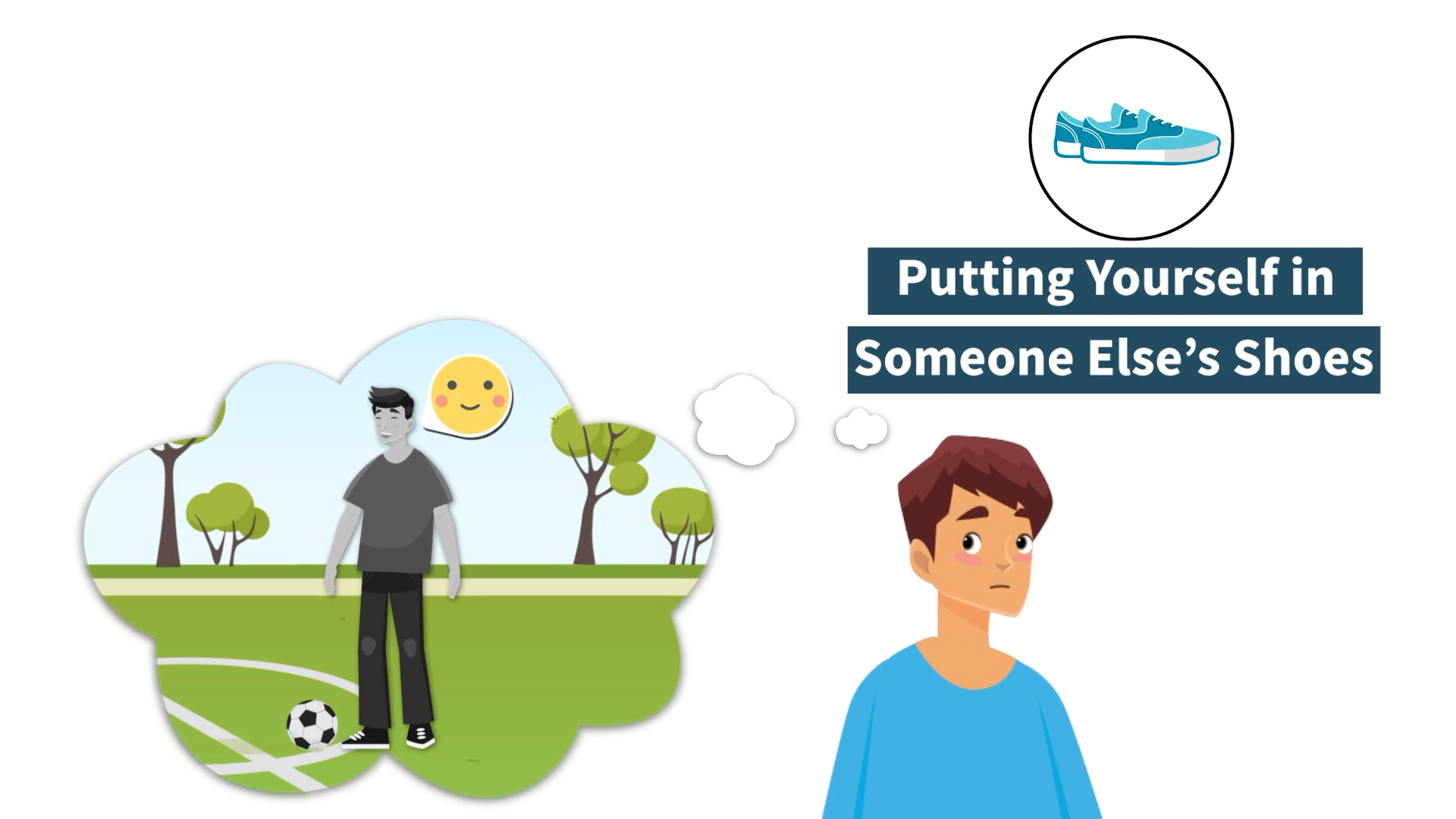
In this blog post, we will discuss the importance of teaching children to see from others’ point of view and provide an easy-to-implement, no-prep activity for educators. We will also offer discussion questions and related skills to help elementary students develop empathy and understanding towards their peers. By learning to put themselves in someone else’s shoes, students can improve their problem-solving abilities, become better friends, and learn how to act in a way that is sensitive to others’ feelings.
No-Prep Activity: The Shoebox Scenario
This activity requires no preparation or materials and can be easily incorporated into a lesson plan. The goal is to help students practice seeing from others’ point of view by imagining how their peers feel in different situations.
- Have students sit in a circle.
- Ask one student to think of a situation they have experienced or witnessed, without sharing any details.
- The student should then describe how they felt in that situation, using facial expressions, body language, and tone of voice.
- Other students in the circle should observe the student’s cues and try to determine the emotions being conveyed.
- Once everyone has had a chance to guess the emotion, the student can reveal the situation and discuss whether their peers accurately identified their feelings.
- Repeat the process with other students in the circle.
This activity encourages students to pay attention to non-verbal cues and practice empathy by considering how their classmates may feel in various situations.
Discussion Questions
After completing the Shoebox Scenario activity, use these discussion questions to stimulate further conversation and reflection:
- How does seeing from others’ point of view help us understand them better?
- Can you think of a time when you misunderstood someone because you didn’t consider their point of view? What happened, and how could you have handled the situation differently?
- How can we practice seeing from others’ point of view in our everyday lives?
- Why is it important to consider others’ feelings when making decisions or taking actions?
- How can understanding others’ points of view help us become better problem-solvers and friends?
Related Skills
In addition to seeing from others’ point of view, there are several other social-emotional learning skills that can help elementary students develop empathy and understanding:
- Active listening: Encourage students to fully engage in conversations by paying attention, asking questions, and responding thoughtfully.
- Emotion recognition: Teach students to identify and label their own emotions and the emotions of others.
- Conflict resolution: Help students develop strategies for resolving disagreements in a respectful and productive manner.
- Cooperation and teamwork: Foster a sense of community by encouraging students to work together on group projects and activities.
Next Steps
If you’re interested in exploring more activities and strategies to help your students develop empathy and see from others’ point of view, consider signing up for free samples of our skill-building resources and materials. Visit Everyday Speech’s Sample Materials to access a variety of tools designed to support social-emotional learning in the classroom.





